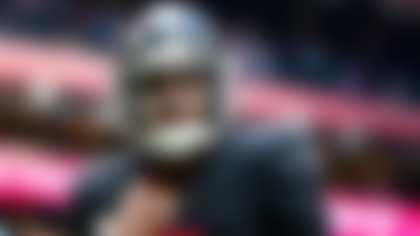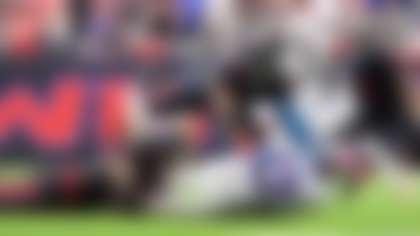We don't yet have a new collective bargaining agreement, but there is still business to complete in the coming weeks for the decision-makers in the NFL.
The Annual League Meeting is set for March 29 through April 1, and with it comes the usual housekeeping, as well as rule change proposals. Four teams have offered more than a handful of possible changes for 2020, including one that could change the way we view close games in their final stages.
The most significant change proposed would come on the kickoff, which has been changed in recent years to move up the location of the kickoff, eliminate running starts and increase the yardage gained on a touchback in an effort to improve the game's most dangerous play. With those changes came a significant detriment to the chances of successfully executing an onside kick, with teams recovering an onside kick at a rate of just 10.4 percent in the last two seasons, including a rate of 7.7 percent in 2018, the lowest since such data became available in 1992, per NFL Research.
The league is ready to consider something it first made available in the 2020 Pro Bowl. Instead of only being able to attempt an unlikely onside kick, the team set to kickoff can instead elect to attempt to gain a first down on fourth-and-15 from its own 25. If successful, the team would maintain possession from that point on the field.
The concept was first introduced in the ill-fated Alliance of American Football (with a fourth-and-12 attempt from the possessing team's own 28 inside the final five minutes of regulation), and a variation of this proposal was presented at last year's meetings by the Denver Broncos, with their proposal occurring at the 35-yard line. That proposal did not survive the process last offseason.
This time, it's coming from the Philadelphia Eagles, with an adjustment to the starting point to presumptively increase the risk associated with such an attempt.
The change would add an exciting element to what has essentially become a likely failed attempt in recent years. Attempts on fourth-and-15 have occurred 60 times over the last 10 seasons, and 16 of such plays have been successfully converted (26.7 percent), including two of seven attempts in 2019, per NFL Research.
With another year and a slight adjustment, perhaps the chances of this rule passing will see an increase when league officials meet in Palm Beach, Florida, at the end of the month.
Also among the proposals:
» Modify the blindside block rule to prevent unnecessary fouls (proposed by Philadelphia).
This seems somewhat necessary after flags were thrown on players who didn't actually appear to be violating a blindside block rule in 2019. In one instance, Browns tackle Greg Robinson was flagged in Week 1, and then-offensive coordinator Todd Monken later told reporters the league contacted the team to notify them the flag was incorrectly thrown.
»Make permanent the expansion of automatic replay reviews to include scoring plays and turnovers negated by a foul, and any successful or unsuccessful try attempt (proposed by Philadelphia).
»Restore preseason and regular season overtime to 15 minutes and implement rules to minimize the impact of the OT coin toss (proposed by Philadelphia).
»Provide the option to the defense for the game clock to start on the referee's signal if the defense declines an offensive penalty that occurs late in either half (proposed by Miami).
»Add a "booth umpire" as an eighth game official to the officiating crew (proposed by Baltimore and the Los Angeles Chargers).
»Add a senior technology advisor to the referee to assist the officiating crew (proposed by Baltimore and the Los Angeles Chargers).
Last year's Annual League Meeting saw the league bring to the table the ability to review pass interference, which was thoroughly considered, tabled and officially added to the rulebook later in the offseason. We could again see the rulebook amended to keep the game up to date with the seemingly ever-changing sport of football.












